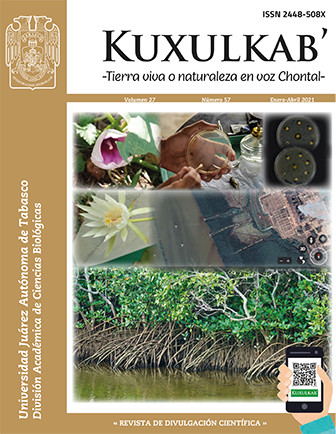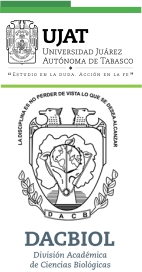ANALYSYS OF THE LOCAL TEMPERATURE RECORD IN SOUTHEAST MEXICO
DOI:
https://doi.org/10.19136/kuxulkab.a27n57.3501Keywords:
Temperature, Climatic trends, Climate change, Heat islandsAbstract
In recent years, the planet has been involved in a process of global warming, which leads to the need to know more about temperature variations. The objective of this investigation was to identify the annual trends of maximum (variable 1) and minimum (variable 2) temperature in southern Mexico from 1960 to 2000. The stations in the states of Campeche, Quintana Roo, Tabasco and Yucatán presented similar temperature ranges, while the station in Chiapas presented variations associated with the orography of the state. The results for both variables showed a positive trend in most of the stations. They had in common that, many of these stations are in urbanized areas or in areas with little or no vegetation. This can be associated with the manifestation of heat islands due to urbanization.
Downloads
References
Ángel, L.; Ramírez, A. & Domínguez, E. (2010). Isla de calor y cambios espacio-temporales de la temperatura en la ciudad de Bogotá. Revista de la Academia Colombiana de Ciencias Exactas, Físicas y Naturales, 34(131): 173-183. Recuperado de «http://www.accefyn.com/revista/Vol_34/131/173-183.pdf»
Englehart, P.J. & Douglas, A.V. (2005). Changing behavior in the diurnal range of surface air temperatures over Mexico. Geophysical Research Letters, 32(1): 1-4. DOI «https://doi.org/10.1029/2004GL021139»
García Amaro de Miranda, E. (2003). Distribución de la precipitación en la República Mexicana. Investigaciones Geográficas, (50): 67-76. Recuperado el 29 de abril del 2019 de «http://www.scielo.org.mx/scielo.php?script=sci_arttext&pid=S0188-46112003000100009&lng=es&tlng=es»
Honjo, T.; Narita, K.; Sugawara, H.; Mikami, T.; Kimura, K. & Kuwata, N. (2003). Observation of Cool Island Effect in Urban Park (Shinjuku Gyoen), (Conference presented in the Fifth International Conference on Urban Climate 2000-2003). Lodz, Poland. Recovered from «http://meteo.geo.uni.lodz.pl/icuc5/text/O_24_3.pdf»
IPCC (Intergovernmental Panel on Climate change). (2007). Cambio climático 2007: Informe de síntesis. Contribución de los Grupos de trabajo I, II y III al Cuarto Informe de evaluación del Grupo Intergubernamental de Expertos sobre el Cambio Climático, (p. 104). Ginebra, Suiza. Recuperado de «https://www.ipcc.ch/site/assets/uploads/2018/02/ar4_syr_sp.pdf»
Magrin, G.; Gay García, C.; Cruz Choque, D.; Giménez, J.C.; Moreno, A.R.; Nagy, G.J.; Nobre, C. & Villamizar, A. (2007). Chapter 13 - Latin America. In: Climate Change 2007: Impacts, Adaptation and Vulnerability. Contribution of Working Group II to the Fourth Assessment Report of the Intergovernmental Panel on Climate Change, (p. 581-615). Cambridge, United Kingdom: Cambridge University Press. Recovered from «https://www.ipcc.ch/site/assets/uploads/2018/02/ar4-wg2-chapter13-1.pdf»
Márdero, S.; Nickl, E.; Schmook, B.; Schneider, L.; Rogan, J.; Christman, Z. & Lawrence, D. (2012). Sequías en el sur de la península de Yucatán: análisis de la variabilidad anual y estacional de la precipitación. Investigaciones Geográficas, (78): 19-33. DOI «https://doi.org/10.14350/rig.32466»
Romero, H.; Salgado, M. & Smith, P. (2010). Cambios climáticos y climas urbanos: relaciones entre zonas termales y condiciones socioeconómicas de la población de Santiago de Chile. Revista INVI, 25(70): 151-179. Recuperado de «https://scielo.conicyt.cl/pdf/invi/v25n70/art05.pdf»
RStudio Team. (2020). RStudio: Integrated Development for R, [Software]. RStudio, PBC, Boston, MA. «http://www.rstudio.com/»
Downloads
Published
Issue
Section
License
Copyright (c) 2021 Kuxulkab'

This work is licensed under a Creative Commons Attribution-NonCommercial-ShareAlike 4.0 International License.
Los autores que publiquen en Kuxulkab' aceptan las siguientes condiciones como política de acceso abierto:
1. Que conservan los derechos de autor y ceden a la revista el derecho de la primera publicación, con el trabajo registrado con la licencia de atribucion de "Creative Commons", que permite a terceros utilizar lo publicado siempre que mencionen la autoría del trabajo y a la primera publicación en esta revista.
2. El autor puede realizar otros acuerdos contractuales independientes o adicionales para la distribución no exclusiva de la versión del artículo publicado en esta revista, como por ejemplo incluirlo en un repositorio institucional o publicarlo en un libro, siempre que se indique claramente que el trabajo se publicó por primera vez en esta revista.












